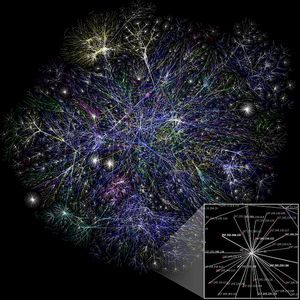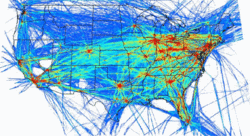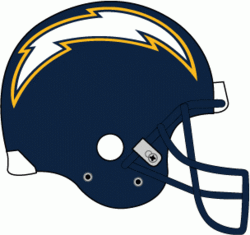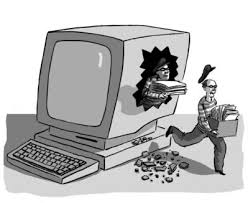 What we call “technology” is usually just the icing on a very large cake.
What we call “technology” is usually just the icing on a very large cake.
The vast majority of code is invisible. We don’t see it. We don’t know how it works. We don’t know what it does. But it’s absolutely necessary or the whole edifice collapses.
For most of the last generation, however, we’ve obsessed over very visible technology, and created vast fortunes around it. PCs, consumer electronics, and iPhones are all very visible. The last mile of our Internet connections are fairly visible. Applications we use every day, like the word processor I’m using now, are visible. Games are very visible. The Web sites we visit to shop or interact, to learn or to play in, are all very, very visible.
Behind and below that, however, is an enormous amount of invisible technology. Operating systems are mainly invisible. It is when they become visible, when they cause us trouble, that they cause a problem. The Internet Protocol that runs the Internet is invisible. Only those who learn a lot and have mad skilz can understand it.
 Most of the invisible technology is run under a treaty-like contract called open source because the companies that make it have figured out over the last 20 years that it makes sense to share its development costs. While Richard Stallman’s vision of Free and Open Source Software, first described in the 1980s, was for tools that people would see, use, and be able to repair freely, the vast majority of people only care about the second. Open source, an idea put forward by Eric Raymond and others 20 years ago, modified this idea, taking out the free, so that the Little Red Hens who did the work wouldn’t have to give it away to their chicken, cow and duck competitors.
Most of the invisible technology is run under a treaty-like contract called open source because the companies that make it have figured out over the last 20 years that it makes sense to share its development costs. While Richard Stallman’s vision of Free and Open Source Software, first described in the 1980s, was for tools that people would see, use, and be able to repair freely, the vast majority of people only care about the second. Open source, an idea put forward by Eric Raymond and others 20 years ago, modified this idea, taking out the free, so that the Little Red Hens who did the work wouldn’t have to give it away to their chicken, cow and duck competitors.
Technology has developed well under this agreement. The money is at the top layer, and people pay for that development, with cash or the hassle of making tools work without documentation. This is the technology we see and know. The costs of the plumbing are shared, with free versions available without documents while “professional” versions are sold as support, or as physical products.
But something is changing at the top of the stack. Venture capital is drying up because, at least for now, developers have run out of obvious ideas. How many more game apps and shopping apps and delivery apps can we really use? A shakeout has begun, a lot of late-coming applications are written down, written off, or told the bank is closed. While many folks in Silicon Valley are going to moan bitterly about this, as they did during the dot-bomb 16 years ago, it’s part of a natural business cycle, a mega-cycle if you will, and not worth worrying about unless you’ve got stock in a “unicorn” or stalled start-up and are being told to take more equity for less money, or that you can’t be funded at all.
The real value of technology is moving into the invisible realm. These are the start-ups Sand Hill Road wants to see today.

Generally, however, you’re safer crossing the country on a jet airplane today than you are going to the store for some milk and cookies – and that’s true whether you’re in a car, on a bike, or just walking.
Air traffic, and commercial jets, are systems. They’re not things. There are a lot of components in there, millions of computers and Internet connections, under many protocols. The pilot knows before takeoff if a light goes out, and waits at the gate for it to be repaired. The airline knows about wear-and-tear before parts break, and can schedule maintenance. Public and private laws (the latter enforced by standards bodies and insurers) make certain that scheduled carriers stay within the system.

As things become systems, technology becomes invisible to ordinary people, but the benefits multiply. It’s cool to have a FitBit, and these simple devices can save millions of dollars as employers use them to enforce compliance with health guidelines. But there are also devices that report directly to doctors, and the number of such devices are multiplying. As they prove their economic worth, these monitors are increasingly being incorporated into health care.

This starts with compliance systems for chronic conditions, paying insurers (and the doctors working for them) to make sure you take your diabetes, heart or kidney medications on schedule, sharing in the resulting savings. Over time, a lot of the human interactions in these networks will be replaced by machine interactions. You may not have to go to the doctor. Maybe a health care worker will come to you.
Cars are becoming transportation systems. Once large numbers of these things have autonomous capability, they can be networked. Whole cities, states, and nations will have their cars networked, making them safer and usable by everyone. Wal-Mart isn’t so much a company as it is a system. Amazon.Com, too, is a system, as are FedEx and UPS and the postal system. They’re commerce systems, built around stores, online ordering, and connections among them. But the vast majority of the technology they use is invisible to you. It’s going to get better, as your shopping list completes itself, allowing you to either surf for the best deal or have it done for you, as a service.

So let’s sum up. Things are becoming systems. Systems represent invisible technology. Right now these systems are highly proprietary, because companies that invest in this invisible technology want to see the benefits of that investment. It may be that open source contracts will, in time, be written to share this code. This will bring the costs down.
But the key to making the future work, the key to making progress happen, is shifting, in this decade, from what individuals do in the marketplace to the invisible cooperation corporations and governments can create behind the scenes.
A lot of people cry “Freedom” and call this a dystopia. A lot of people are wrong.










